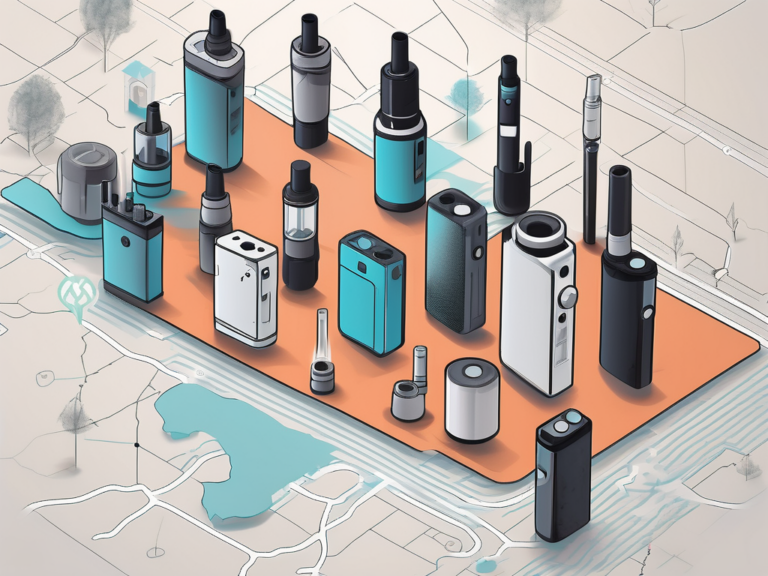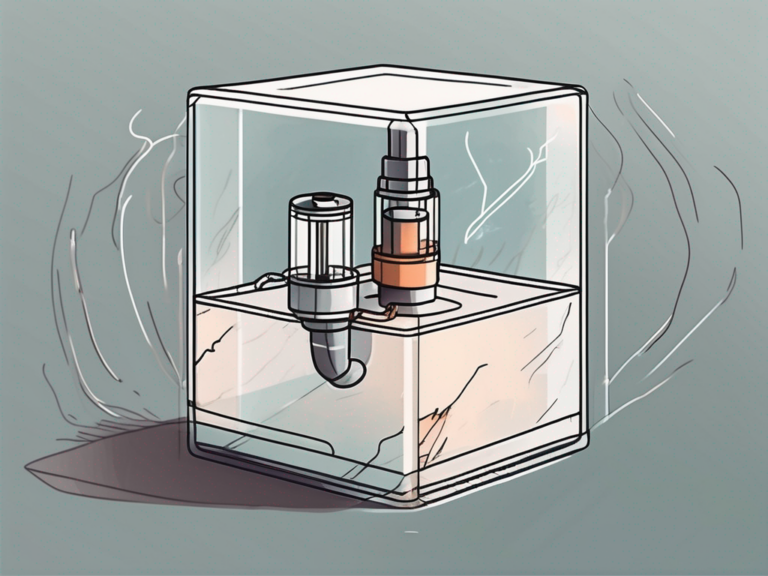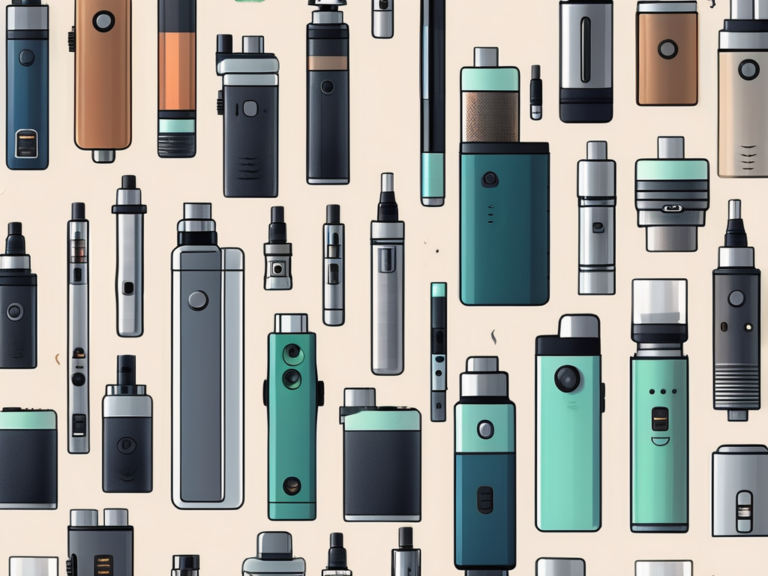when will vapes be banned in california
As vaping continues to gain popularity, questions about its legality and potential bans arise. In the state of California, where vaping is prevalent, many people wonder when vapes will be banned. In this article, we will explore the current legal status of vapes in California, the health implications of vaping, the potential timeline for a vape ban, the impact of a potential ban, and opposition to such a ban.
Understanding the Current Legal Status of Vapes in California
Before we delve into the potential ban, it is crucial to understand the existing regulations on vaping in California. As of now, vaping is legal for individuals who are 21 years of age or older. However, there are several restrictions in place to protect public health and safety.
The Existing Regulations on Vaping
In California, vaping is prohibited in most public places, including restaurants, bars, and public transportation. This is to prevent secondhand exposure to potentially harmful chemicals present in e-cigarette aerosol.
In addition, California law requires vape product manufacturers to include warning labels on their packaging. These labels inform consumers about the potential health risks associated with vaping, particularly for pregnant women and individuals with respiratory conditions.
Moreover, California has taken steps to limit the marketing and advertising of vaping products, especially towards youth. This includes restrictions on the use of cartoon characters or other imagery that may appeal to minors. The state also prohibits the sale of vaping products in vending machines, ensuring that access is restricted to age-appropriate venues.
The Role of the Food and Drug Administration
While California has implemented its own regulations, the Food and Drug Administration (FDA) also plays a vital role in regulating vapes. The FDA is responsible for evaluating the safety and efficacy of various vaping products.
Currently, the FDA’s focus is primarily on the regulation of e-cigarettes containing nicotine. The agency has implemented restrictions on the sale of flavored e-cigarettes in an effort to curb youth vaping. However, these regulations are subject to change as new scientific evidence emerges.
It is important to note that the FDA’s authority extends to the regulation of vape ingredients, manufacturing processes, and labeling practices. This comprehensive approach aims to ensure that consumers are informed about the contents of vaping products and are protected from potential harm.
The Health Implications of Vaping
One of the main concerns surrounding vaping is its potential impact on lung health. Although vaping is often marketed as a safer alternative to smoking traditional cigarettes, there is still much to learn about its long-term effects.
As the popularity of vaping continues to rise, researchers are working diligently to uncover the full scope of its impact on human health. In addition to respiratory concerns, studies are also exploring the effects of vaping on cardiovascular health, immune function, and overall well-being.
The Impact of Vaping on Lung Health
Research suggests that vaping can have detrimental effects on the respiratory system. Inhalation of e-cigarette aerosol, which typically contains nicotine, flavorings, and other chemicals, may contribute to respiratory symptoms, lung inflammation, and impaired lung function.
Moreover, the complex interplay of chemicals in e-cigarette aerosols can lead to oxidative stress and inflammatory responses in the lungs. These reactions can trigger a cascade of harmful effects, potentially increasing the risk of respiratory infections and chronic lung diseases.
Furthermore, there have been reports of severe lung injuries associated with vaping. These cases, often referred to as vaping-related lung illnesses, have raised concerns among health professionals and policymakers.
The Long-Term Effects of Vaping
Since vaping is a relatively new phenomenon, the long-term health effects are still unknown. It may take years of research and observation to fully understand the potential consequences of regular vaping.
However, based on what we currently know, it is evident that long-term vaping could pose serious health risks. These risks include an increased likelihood of developing respiratory diseases, cardiovascular problems, and potential harm to the developing brains of adolescents.
Given the intricate nature of vaping products and their impact on the human body, ongoing studies are crucial for providing comprehensive insights into the long-term health implications of vaping. By examining a wide range of health outcomes and conducting longitudinal research, scientists aim to offer evidence-based guidance to individuals, healthcare providers, and policymakers regarding the use of e-cigarettes.
The Potential Timeline for a Vape Ban
While predictions for a vape ban in California are speculative, we can look at the actions taken by other states to gain insight into a potential timeline.
California, known for its progressive stance on public health issues, has often been a trendsetter in implementing new regulations. With a large population and a significant influence on national policies, any decision regarding a vape ban in California is likely to have far-reaching implications.
Predictions Based on Other State Bans
Several states have already passed legislation to ban or restrict the sale of flavored e-cigarettes. For example, Michigan became the first state to ban flavored e-cigarettes in 2019, while New York implemented a similar ban in 2020.
Given this trend, it is possible that California could follow suit in the coming years. However, any decisions regarding a vape ban will depend on scientific evidence, public opinion, and the political landscape.
States like Massachusetts and Rhode Island have also taken steps to restrict the sale of vaping products, indicating a growing concern over the impact of these products on public health. The evolving landscape of vaping regulations across the country may prompt California lawmakers to consider similar measures to protect their residents.
The Influence of Public Opinion on Legislation
Public opinion plays a significant role in shaping legislation. As awareness of the potential health risks associated with vaping increases, there may be growing support for stricter regulations or even a complete ban.
In California, public health organizations, concerned parents, and medical professionals have advocated for stronger measures to protect young people from the dangers of vaping. This public pressure could influence lawmakers to take action.
The youth vaping epidemic has been a particular concern, with studies showing a rise in vaping among high school students. This alarming trend has sparked calls for decisive action to curb access to vaping products and prevent a new generation from becoming addicted to nicotine.
The Impact of a Potential Vape Ban
If a vape ban were to be implemented in California, it would undoubtedly have substantial implications for various stakeholders, including vape shops, manufacturers, and public health.
California, known for its progressive stance on public health issues, is considering a vape ban that could potentially reshape the landscape of the vaping industry in the state. The proposed ban has sparked intense debates among policymakers, public health experts, and industry representatives, highlighting the complex interplay between economic interests and public well-being.
Economic Consequences for Vape Shops and Manufacturers
A vape ban would likely result in financial repercussions for vape shops and manufacturers. These businesses heavily rely on the sale of vaping products, and a ban could force many to close their doors.
Moreover, the ripple effects of a vape ban would extend beyond just the immediate financial losses. Vape shops serve as community hubs for many individuals who have successfully transitioned from traditional smoking to vaping as a harm reduction strategy. The closure of these establishments could disrupt vital support networks and resources for individuals seeking alternatives to smoking.
Furthermore, vape manufacturers may need to adapt their strategies and shift their focus to alternative products or markets. This transition could lead to job losses and economic challenges within the industry. The sudden shift in market demand could also impact suppliers, distributors, and other businesses along the vaping supply chain, creating a domino effect of economic consequences.
The Potential Public Health Benefits
On the other hand, a vape ban in California could have significant public health benefits. By reducing access to vaping products, particularly among young people, the prevalence of vaping-related illnesses and nicotine addiction could decrease.
Additionally, prohibiting flavored e-cigarettes could deter young individuals from initiating vaping, as flavors often appeal to this demographic. This, in turn, may lead to reduced rates of nicotine addiction and associated health risks. The potential decline in vaping-related hospitalizations and respiratory illnesses could alleviate strain on the healthcare system and improve overall public health outcomes in the state.
Opposition to a Vape Ban
As with any proposed ban, there will likely be opposition from various groups. In the case of a potential vape ban in California, the vaping industry and some individuals may raise concerns.
Arguments from the Vaping Industry
The vaping industry argues that a ban on vaping products may lead to unintended consequences. They suggest that the absence of regulated vaping products could exacerbate the presence of unregulated, potentially dangerous products on the black market.
Additionally, some proponents of vaping claim that it serves as a harm reduction tool for cigarette smokers looking to quit. They argue that banning vaping may lead former smokers to return to combustible cigarettes, which are widely recognized as more harmful.
Concerns about Black Market Activity
Another concern related to a potential vape ban is the rise of black market activity. Prohibiting legal sales may result in the proliferation of unauthorized and potentially unsafe vaping products.
Law enforcement agencies would need to actively combat black market activity, ensuring consumer safety and preventing the unregulated sale of low-quality or counterfeit vaping products.
In Conclusion
The question of when vapes will be banned in California remains uncertain. However, it is evident that vaping regulations are already in place, and public awareness of the potential health risks is increasing.
While a potential vape ban could have economic and societal consequences, it also has the potential to protect public health, particularly among young individuals. Striking a balance between these factors will require careful consideration, scientific evidence, and an ongoing dialogue between stakeholders.






